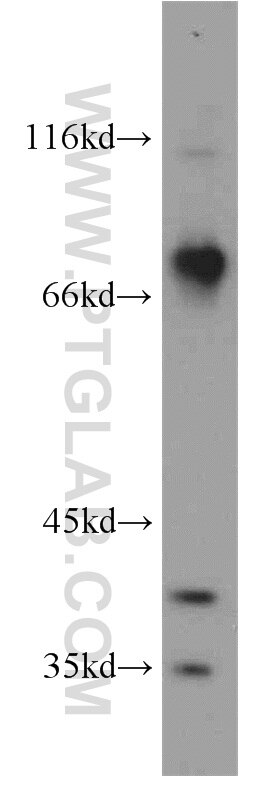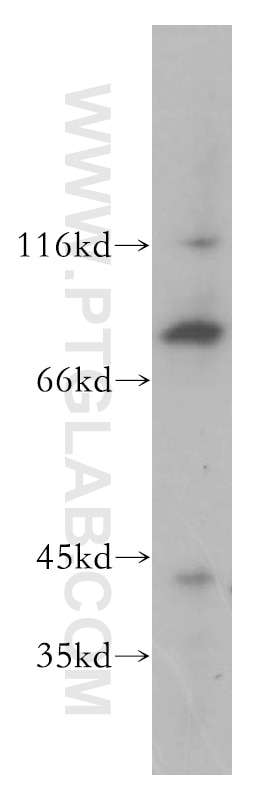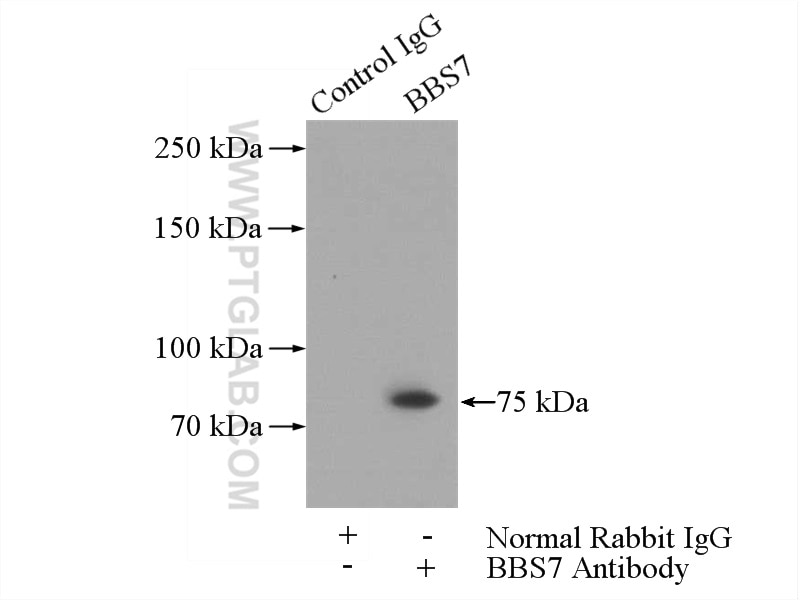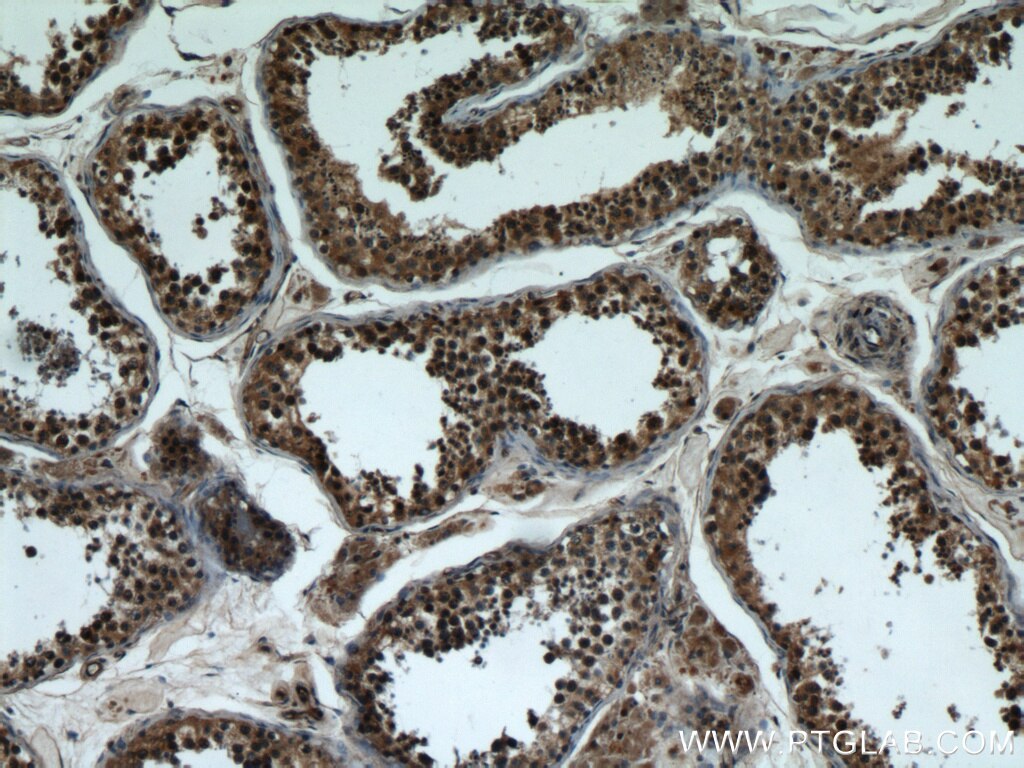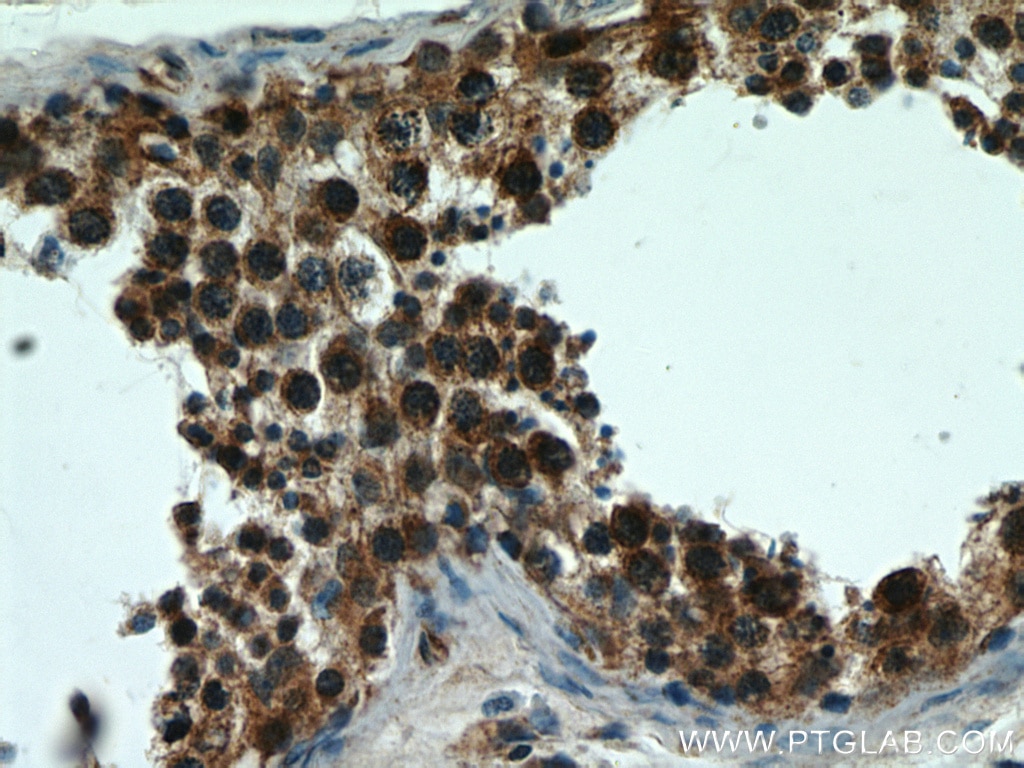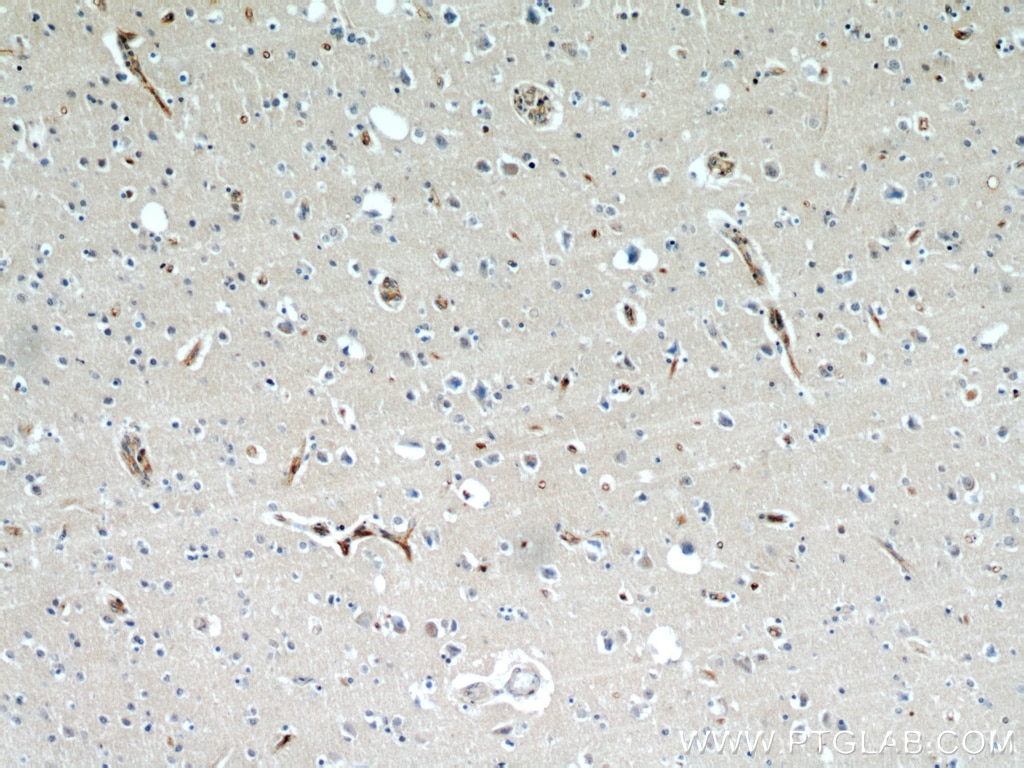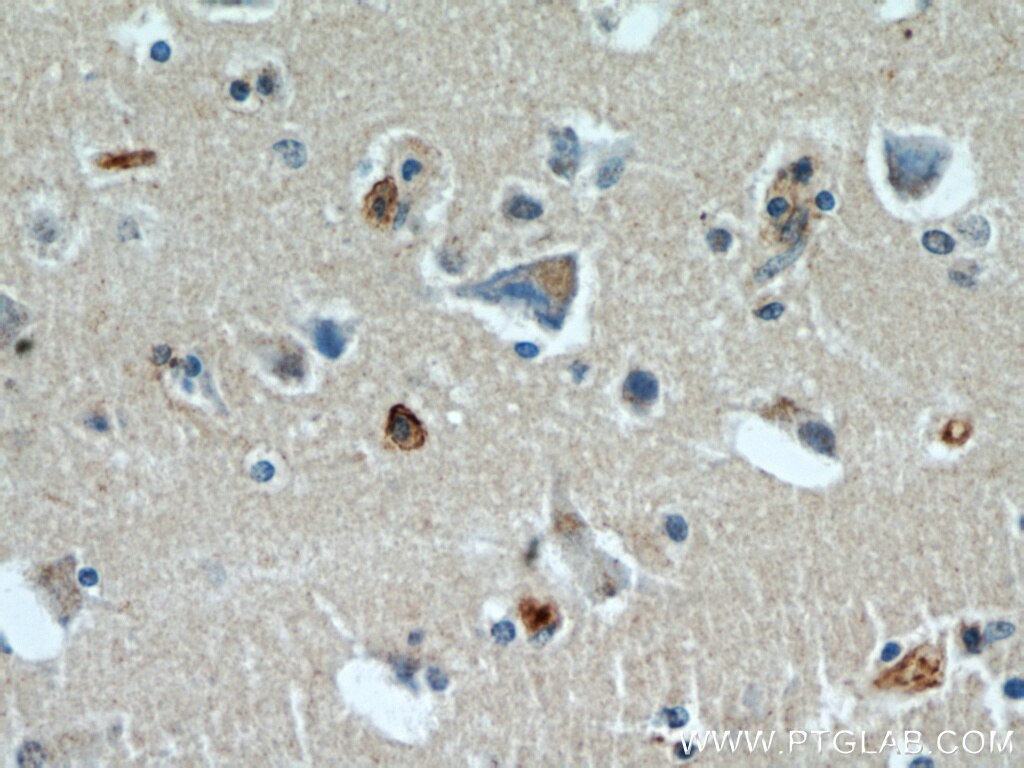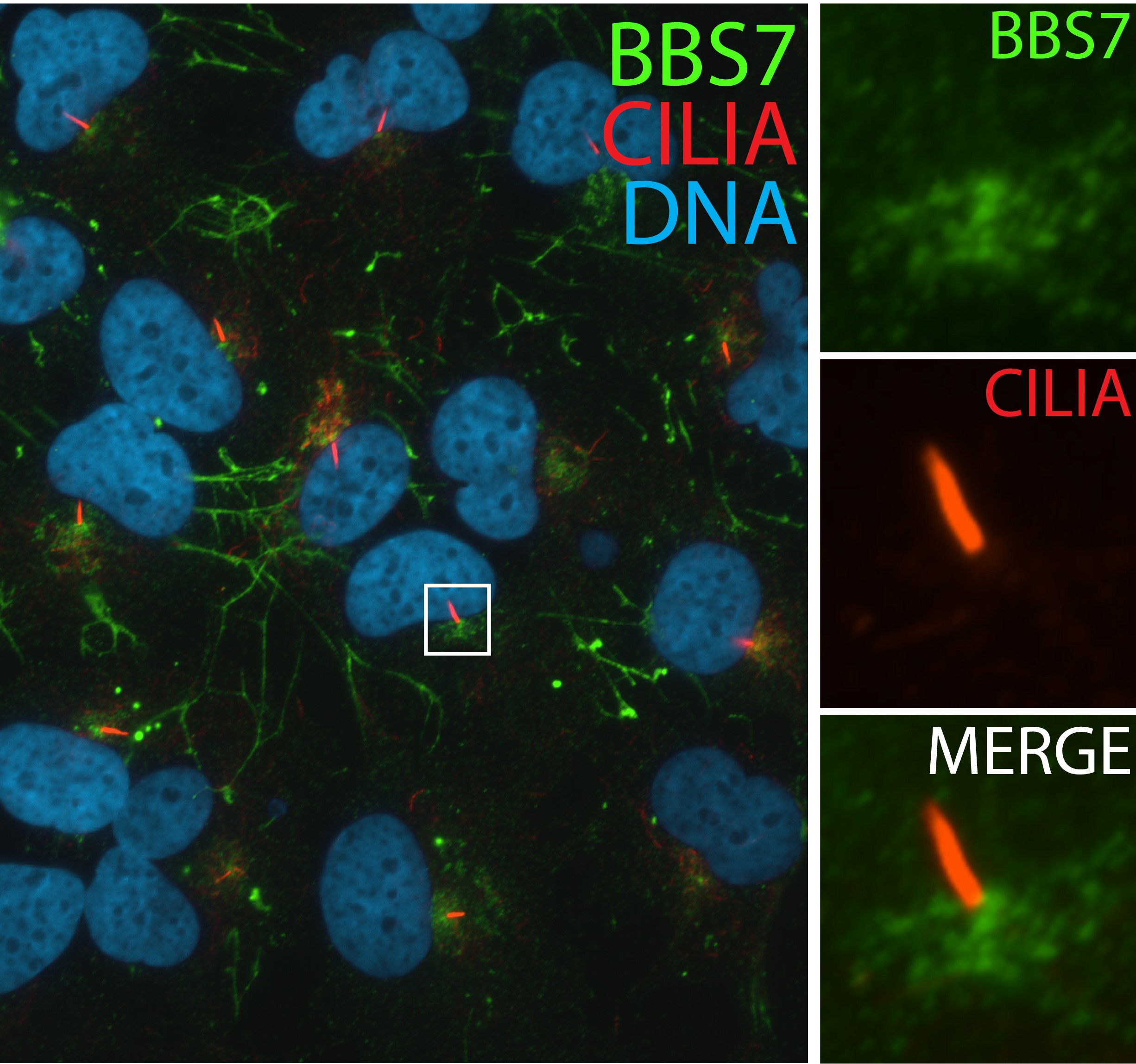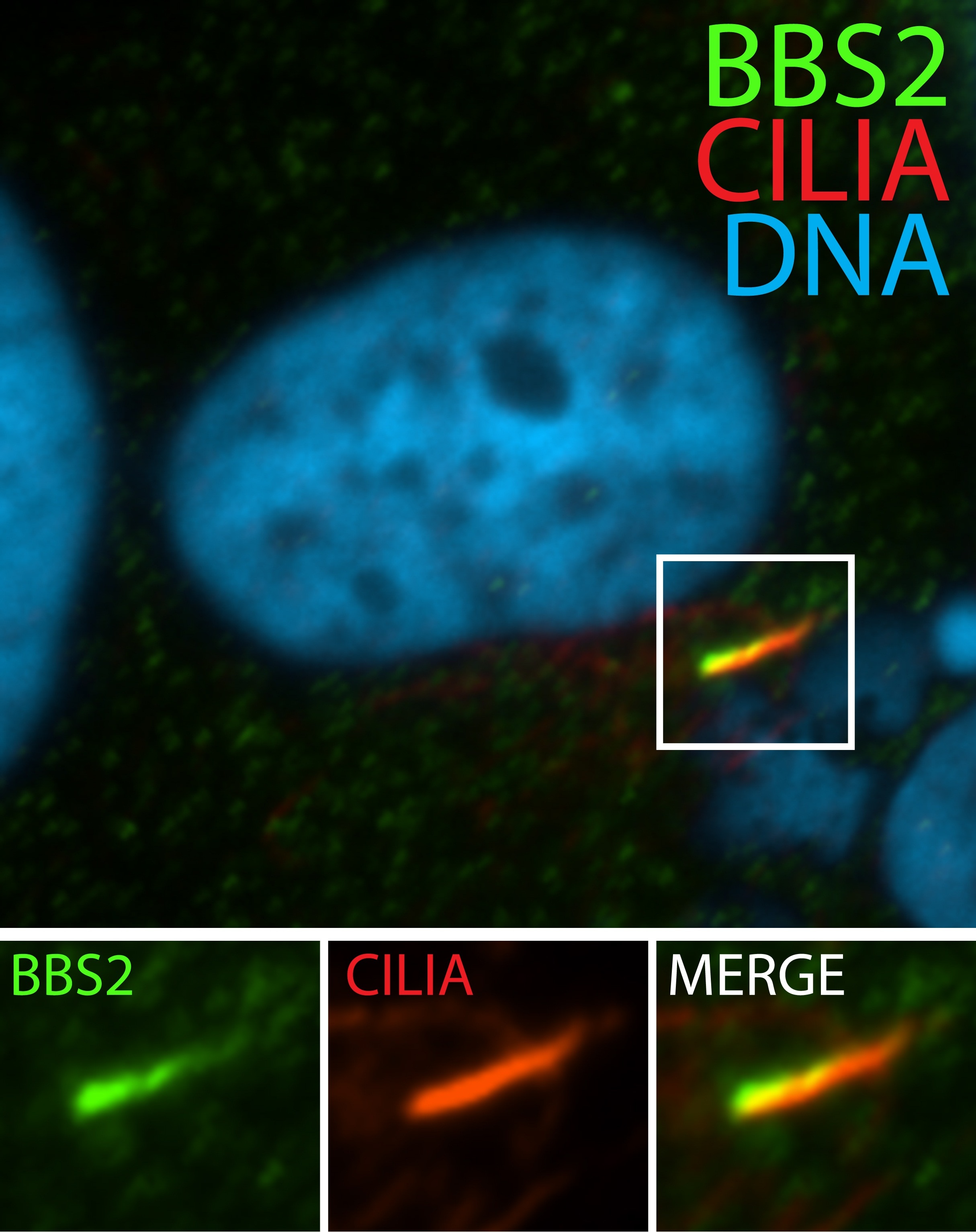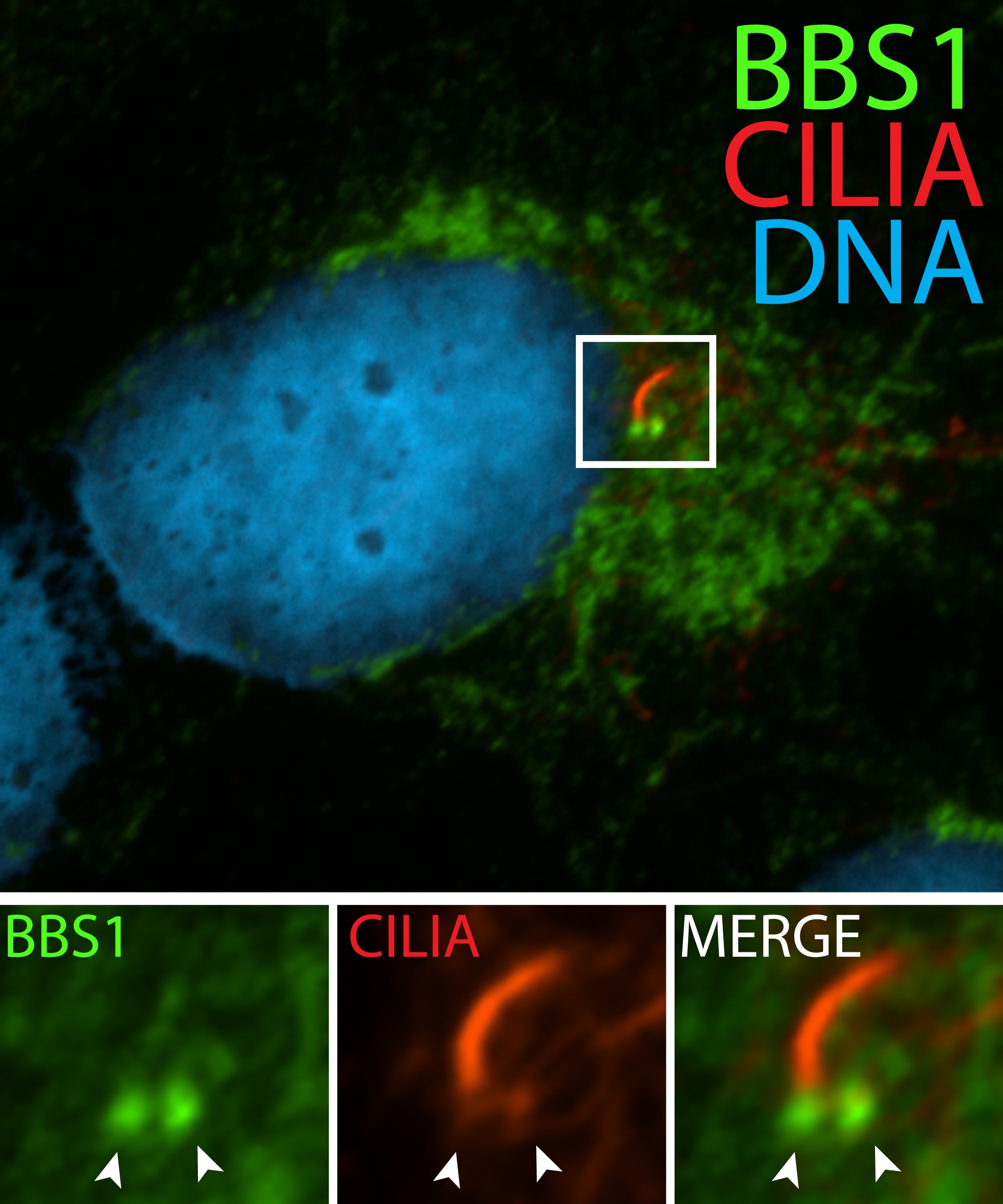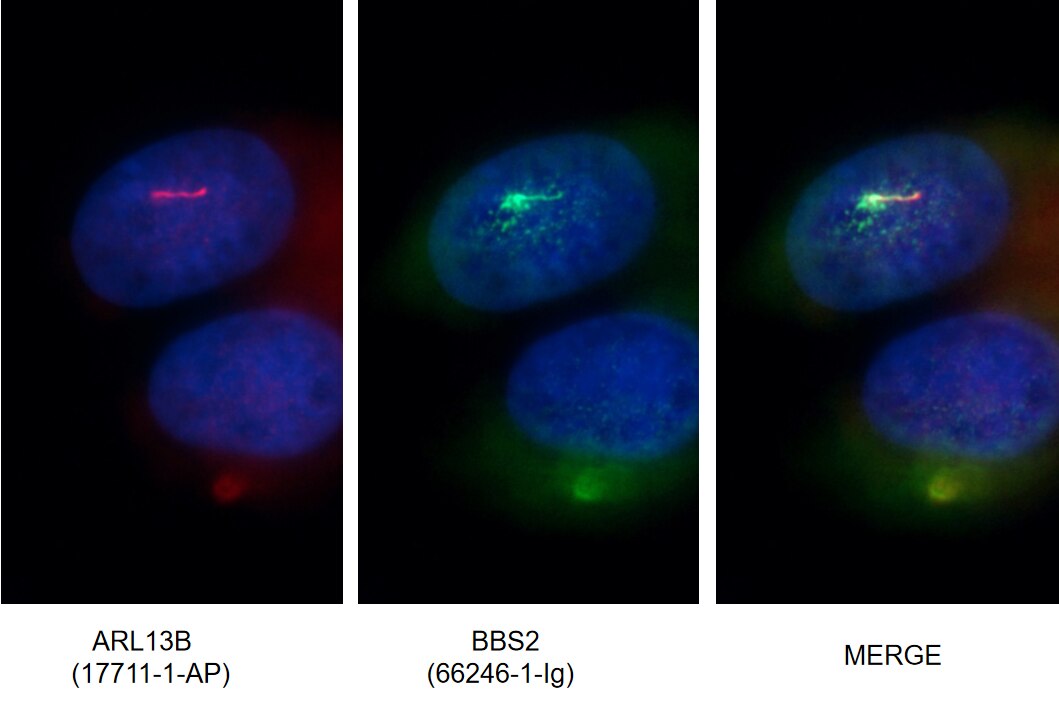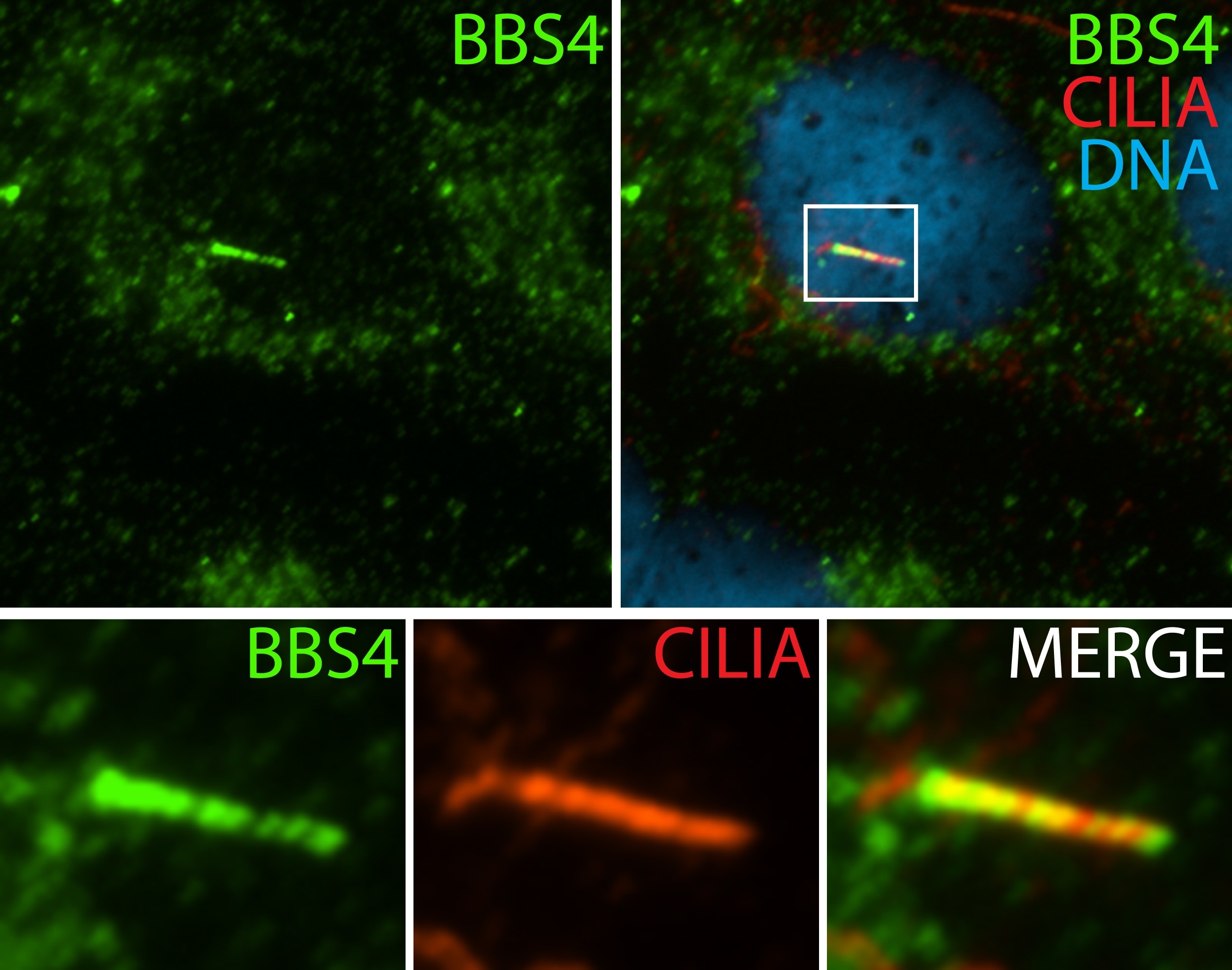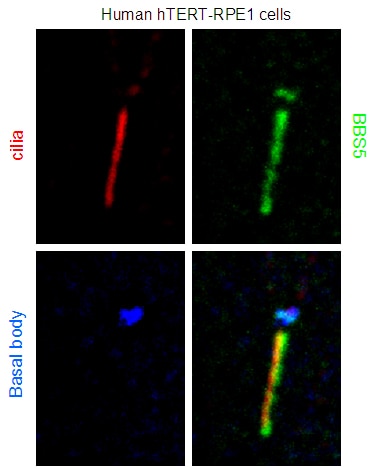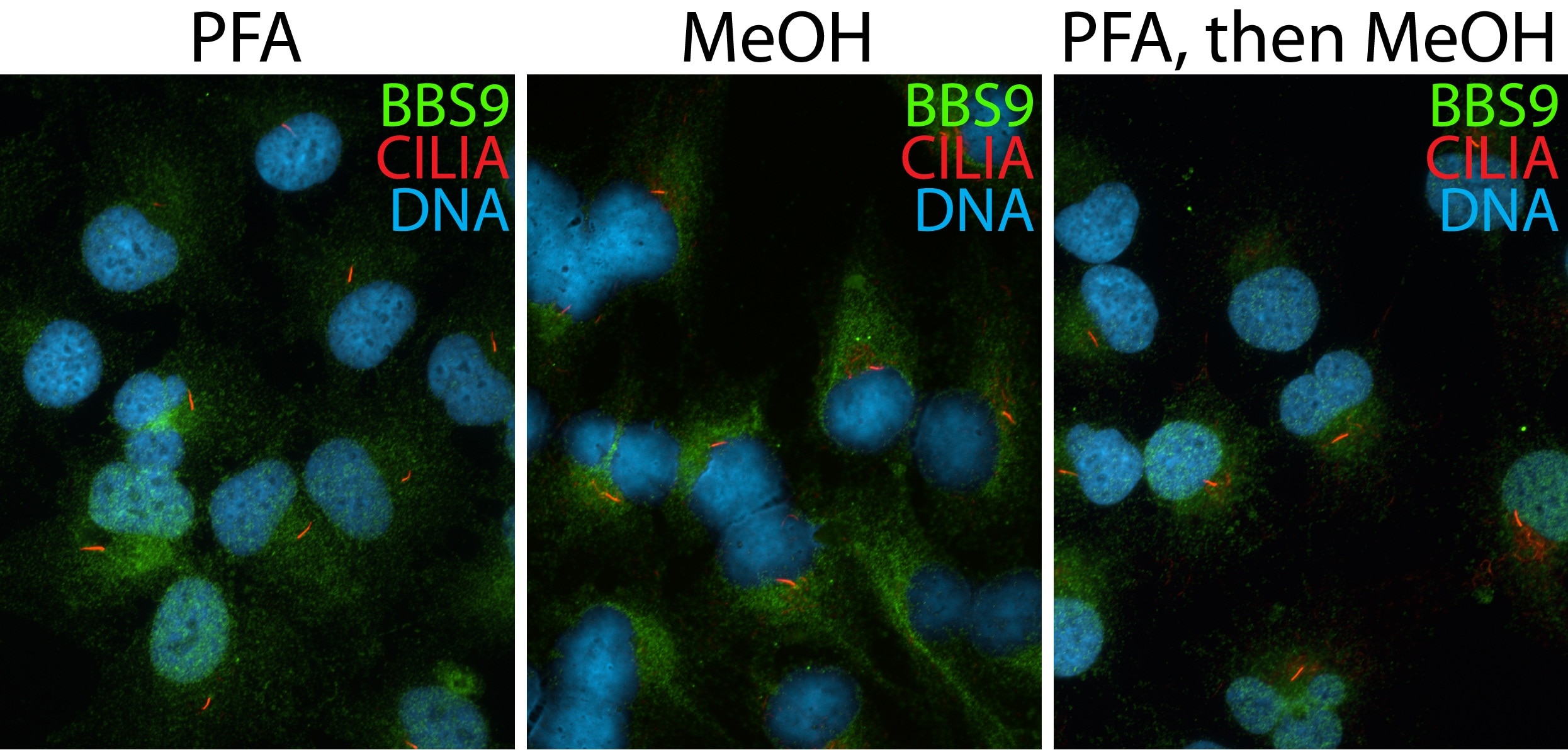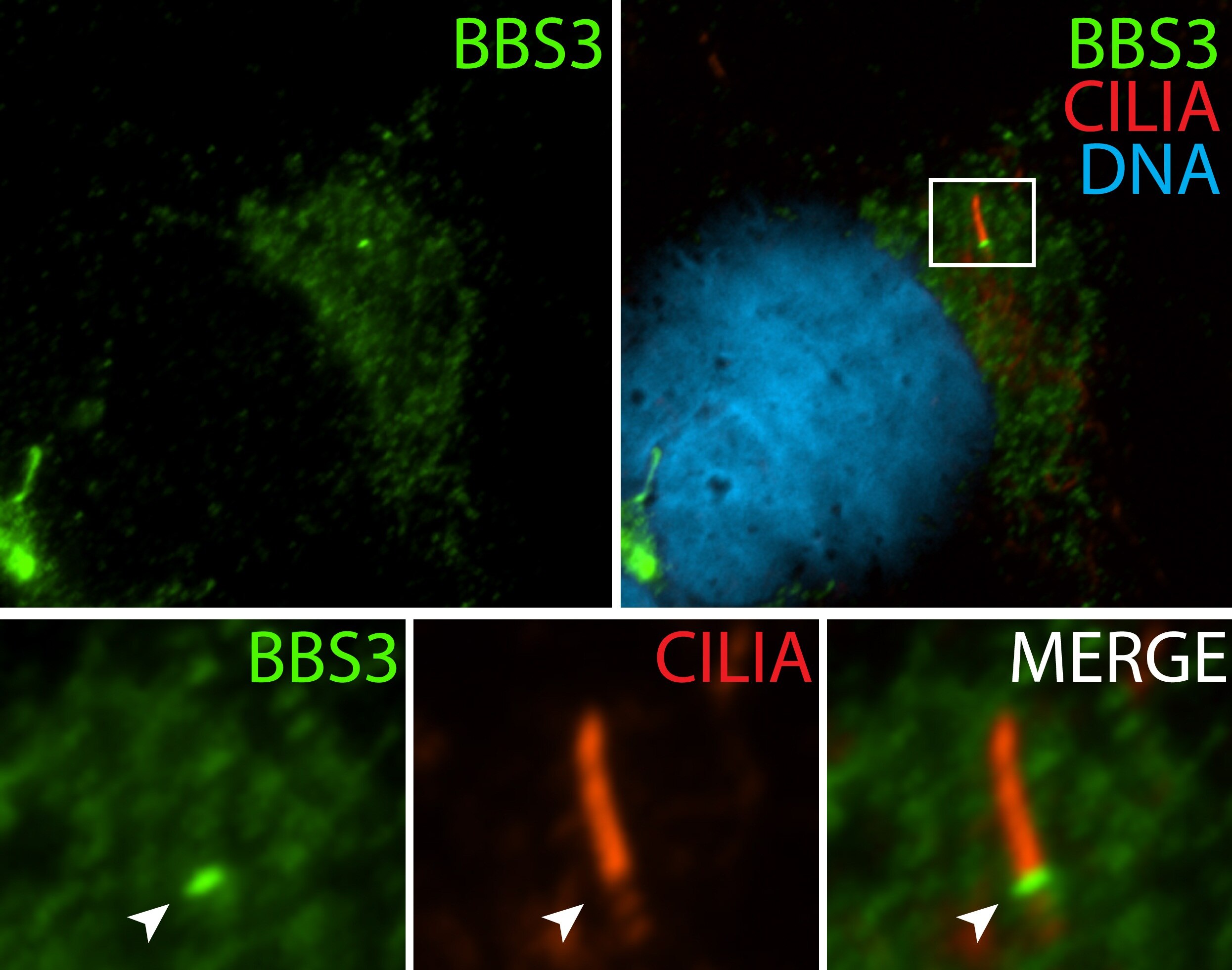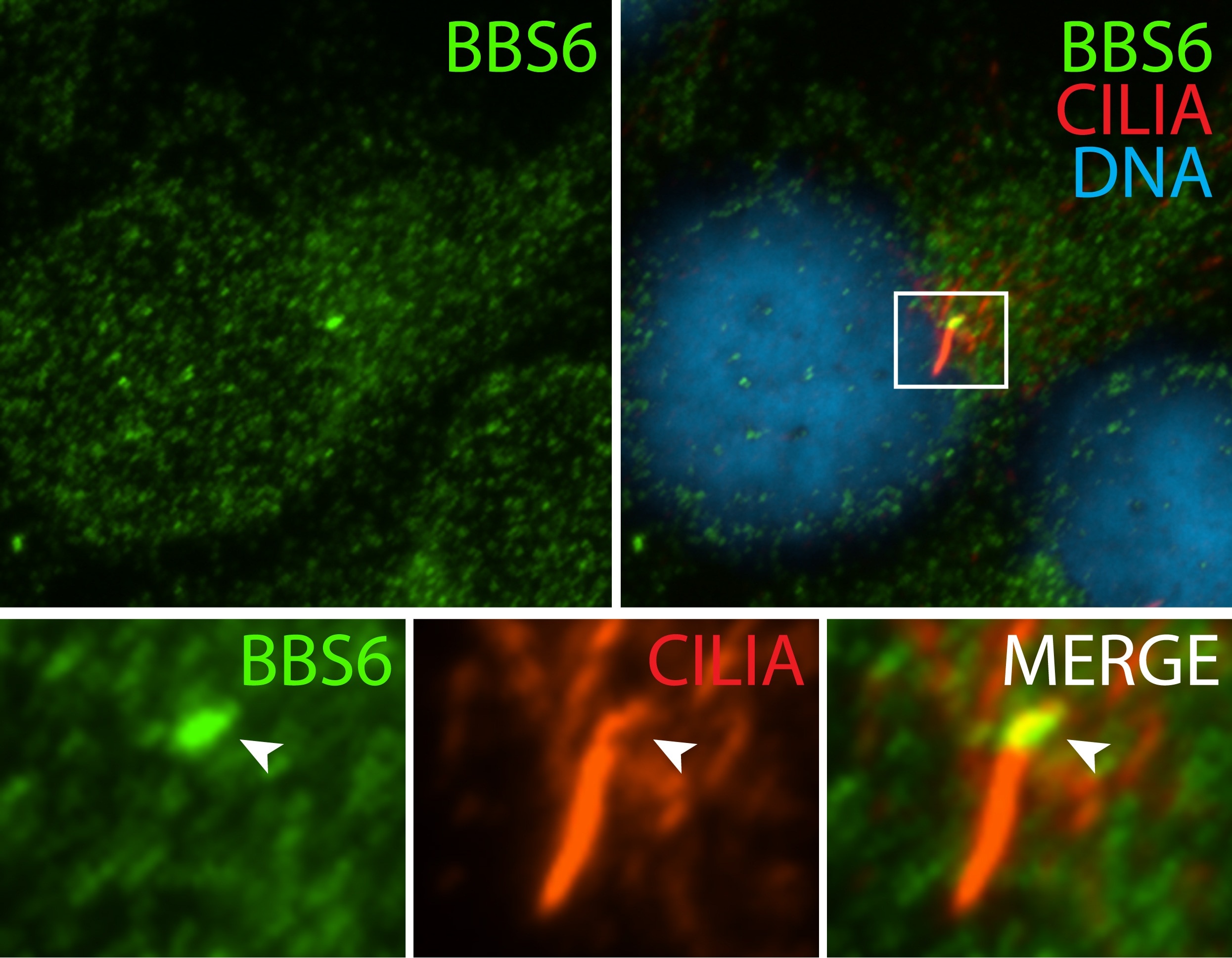Anticorps Polyclonal de lapin anti-BBS7
BBS7 Polyclonal Antibody for WB, IP, IHC, ELISA
Hôte / Isotype
Lapin / IgG
Réactivité testée
Humain, souris
Applications
WB, IP, IHC, ELISA
Conjugaison
Non conjugué
N° de cat : 18961-1-AP
Synonymes
Galerie de données de validation
Applications testées
| Résultats positifs en WB | tissu cérébral humain |
| Résultats positifs en IP | tissu testiculaire de souris |
| Résultats positifs en IHC | tissu testiculaire humain, tissu cérébral humain il est suggéré de démasquer l'antigène avec un tampon de TE buffer pH 9.0; (*) À défaut, 'le démasquage de l'antigène peut être 'effectué avec un tampon citrate pH 6,0. |
Dilution recommandée
| Application | Dilution |
|---|---|
| Western Blot (WB) | WB : 1:500-1:3000 |
| Immunoprécipitation (IP) | IP : 0.5-4.0 ug for 1.0-3.0 mg of total protein lysate |
| Immunohistochimie (IHC) | IHC : 1:20-1:200 |
| It is recommended that this reagent should be titrated in each testing system to obtain optimal results. | |
| Sample-dependent, check data in validation data gallery | |
Applications publiées
| WB | See 7 publications below |
| IHC | See 1 publications below |
| IP | See 2 publications below |
Informations sur le produit
18961-1-AP cible BBS7 dans les applications de WB, IP, IHC, ELISA et montre une réactivité avec des échantillons Humain, souris
| Réactivité | Humain, souris |
| Réactivité citée | Humain, souris |
| Hôte / Isotype | Lapin / IgG |
| Clonalité | Polyclonal |
| Type | Anticorps |
| Immunogène | BBS7 Protéine recombinante Ag4601 |
| Nom complet | Bardet-Biedl syndrome 7 |
| Masse moléculaire calculée | 715 aa, 80 kDa |
| Poids moléculaire observé | 75 kDa |
| Numéro d’acquisition GenBank | BC032691 |
| Symbole du gène | BBS7 |
| Identification du gène (NCBI) | 55212 |
| Conjugaison | Non conjugué |
| Forme | Liquide |
| Méthode de purification | Purification par affinité contre l'antigène |
| Tampon de stockage | PBS avec azoture de sodium à 0,02 % et glycérol à 50 % pH 7,3 |
| Conditions de stockage | Stocker à -20°C. Stable pendant un an après l'expédition. L'aliquotage n'est pas nécessaire pour le stockage à -20oC Les 20ul contiennent 0,1% de BSA. |
Informations générales
BBS7, also named as BBS2L1, is a component of the BBSome complex which is required for ciliogenesis but is dispensable for centriolar satellite function. BBS7 is mediated in part by the Rab8 GDP/GTP exchange factor, which localizes to the basal body and contacts the BBSome.
Protocole
| Product Specific Protocols | |
|---|---|
| WB protocol for BBS7 antibody 18961-1-AP | Download protocol |
| IHC protocol for BBS7 antibody 18961-1-AP | Download protocol |
| IP protocol for BBS7 antibody 18961-1-AP | Download protocol |
| Standard Protocols | |
|---|---|
| Click here to view our Standard Protocols |
Publications
| Species | Application | Title |
|---|---|---|
Proc Natl Acad Sci U S A Accumulation of non-outer segment proteins in the outer segment underlies photoreceptor degeneration in Bardet-Biedl syndrome. | ||
PLoS Genet A novel protein LZTFL1 regulates ciliary trafficking of the BBSome and Smoothened. | ||
PLoS Genet The Centriolar Satellite Protein AZI1 Interacts with BBS4 and Regulates Ciliary Trafficking of the BBSome. | ||
PLoS Genet BBSome function is required for both the morphogenesis and maintenance of the photoreceptor outer segment. | ||
Hum Mol Genet Photoreceptor cilia, in contrast to primary cilia, grant entry to a partially assembled BBSome. | ||
J Biol Chem The myosin-tail homology domain of centrosomal protein 290 is essential for protein confinement between the inner and outer segments in photoreceptors. |
